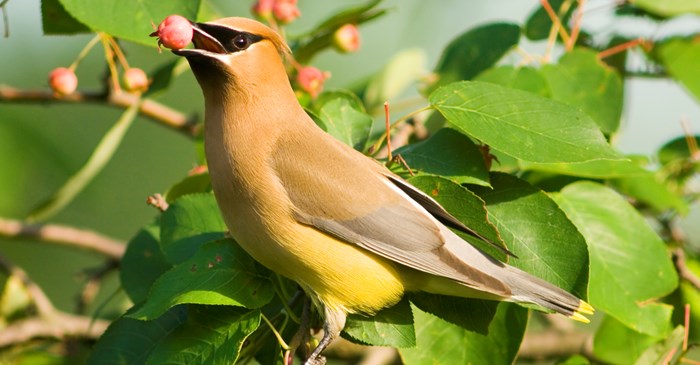Autumn is a great time to be a wild bird. In addition to bird lovers hanging and filling feeders in their yards, nature serves a buffet of fall-bearing seeds and nuts. Send out dinner invitations to your avian friends by planting a feast for birds in your own backyard.
Just as people choose a variety of goodies from a potluck meal, different birds savor the flavors from a variety of plants. A good starting point is to grow plants native to your area, since local birds adapted along with those plants. The more plant diversity you have, the wider range of birds you can attract.
Native plants can also attract beneficial insects. Insects provide a protein source for wild birds. Another benefit from insects is plant pollination which can promote plant health and growth.
Annuals and Perennials With Fall Seed Heads
Look around your yard this fall and notice which plants already attract birds. Check with your local Extension horticulture experts which plants are invasive in your area so you can avoid them.
Annual plants—those that grow, flower, and complete their growing cycle in one year—attract birds with the seeds they set before they die in fall.
Bird-attracting annuals include: amaranth (Amaranthus species), bachelor’s button (Centaureacyanus), calendula (Calendula officinalis), cosmos (Cosmos spp.), marigold (Tagetesspp.), sunflower (Helianthus spp.), and zinnia (Zinnia spp.).
Perennials hardy in your area should grow for many years, even if they die back to the ground during winter.
Bird-friendly perennials that set seeds in the fall include: black-eyed Susan (Rudbeckia spp.), goldenrod (Solidago spp.), globe thistle (Echinops spp.), purple coneflower (Echinacea species), and grasses such as little bluestem (Schizachyrium scoparium) and maiden grass (Miscanthus species and cultivars).
Remember that seed-producing plants are likely to be vigorous reseeders in your garden. Next year, you can pull out any unwanted volunteer plants or let them grow into new plants—and more bird food.
Tree and Shrub Treats Birds Like to Eat
Birds also like to snack on berries and fruits from many trees and shrubs. Some of the most popular include beautyberry (Callicarpa spp.), black cherry, blueberries (Vaccinium spp.), cherries (Prunus spp.), crabapple, eastern red cedar (Juniperus virginiana), mountain ash (Sorbus spp.), viburnum, holly, serviceberry (Amelanchier spp.), spicebush (Lindera benzoin), and winterberry (Ilex verticillata).
Many more bird-attracting fruiting trees and shrubs are likely to grow in your area.
Grow Plants for More Than Bird Food
Along with being a food source, the plants you choose offer many other bird benefits. Conifers and other evergreens provide shelter for nesting and resting. Grasses offer food and cover for ground-loving birds. Nectar-producing flowers such as agastache, monarda, and petunia draw hummingbirds seeking food, especially during fall migration. Nut-producing trees such as oak, walnut, and buckeye not only yield fall food, the spring blooms attract insects that birds like to eat. A great packaged food to complement nature's bounty is Lyric Fruit & Nut High Energy Wild Bird Mix. It is a great high energy food for wild birds.
